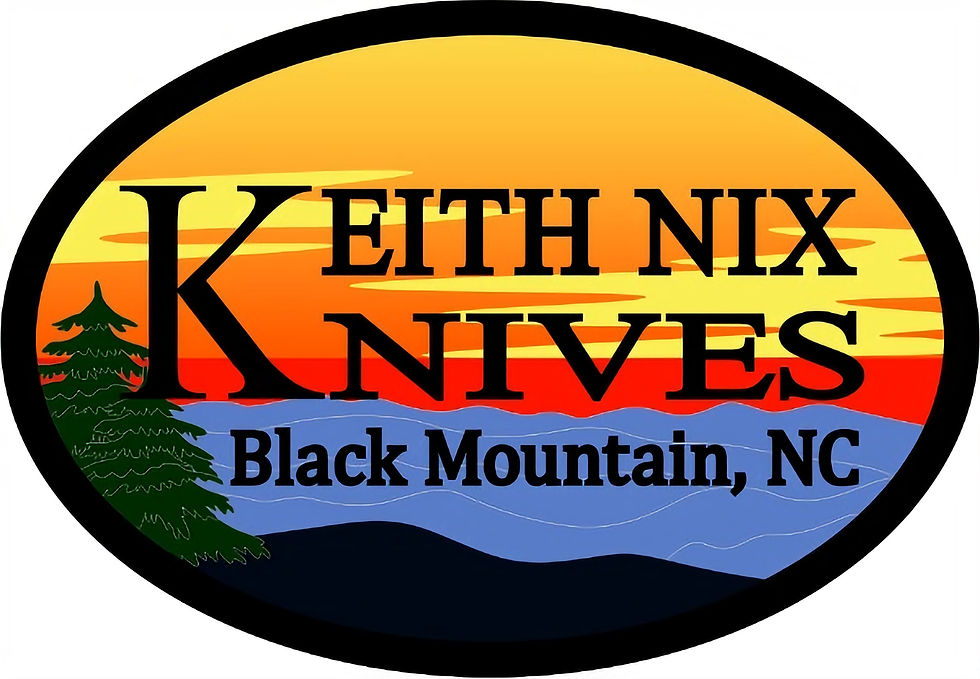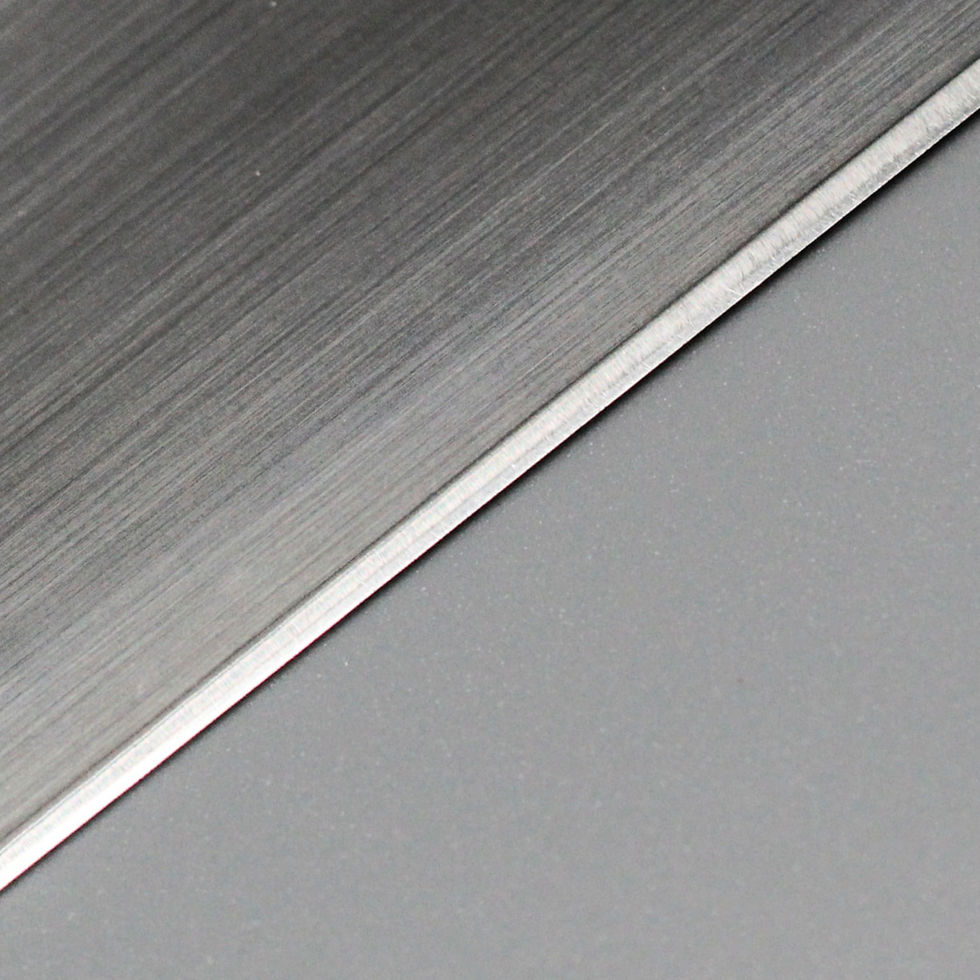What Makes Hunting Knives GOOD? Black Mountain Hunting Knives At Keith Nix Knives
- Keith Nix

- Mar 12, 2022
- 4 min read
Updated: 1 day ago
Keith Nix Knives FREE Learning!! Which Hunting Knife Style is Right For ME?? Does Anyone Make Hunting Knives Near Me?
Everyone who hunts has a unique perspective on what constitutes a good hunting knife. This is partly influenced by the type of game each hunter pursues, and partly by their family traditions. Some prefer large, sturdy knives while others prefer shorter, more precise blades that are agile. For instance, bird hunters require different blades compared to bear, deer or rabbit hunters. Similarly, fishing enthusiasts are also hunters, but their blade requirements are distinct.
STEEL Let's talk about the steel that your knife is made from, before we dive into blade shapes. Over the past two decades, the knife market has introduced a number of "super steels". Some of these offer exceptional wear resistance - meaning they hold their edge for a long time - while others provide superior stain resistance. Others still tout advancements in toughness or hardness.
Hunting knives are essential tools for any outdoor enthusiast. However, choosing the right steel for your hunting knife can be a daunting task, especially if you're looking for a steel with high wear resistance or edge retention. These types of steel can be incredibly difficult to sharpen in the field, which can be a real problem if your knife becomes dull during a hunt.
If you accidentally damage the edge of your "super steel" knife while cleaning game, you may not be able to fix it unless you have a diamond hone with you. This is because these types of steel require a different type of sharpening stone than traditional carbon steel knives. Diamond stones are the preferred choice for sharpening high-performance steel knives, but they can be expensive and difficult to carry with you in the field.
Additionally, the cost of producing and using high-performance steel can be significant. For example, imagine a hypothetical steel called CPM-XYZ that has ten times the wear resistance of traditional carbon steel. "CPM-XYZ" requires diamond stones to sharpen, costs 5-7 times more than traditional steel, and incurs higher production costs. This means that knives made with this type of steel will be more expensive to purchase and produce, and they may not be worth the added cost for some hunters.
Ultimately, it's up to you to decide whether the benefits of high-performance steel are worth the added cost and potential difficulty in sharpening. While high-performance steel can offer significant advantages for certain applications, it may not be necessary for all hunters. It's important to consider your specific needs and preferences when choosing a hunting knife, and to make an informed decision based on your individual situation.
A hunting knife is a tool, in fact, a multi-tool. Typical classic designs try to make the hunting knife a tool to gut and clean a carcass, skin it, break it down into primal cuts, debone the primal cuts, and fillet a few trout for dinner after the same knife is used to process enough firewood to last all night. Of course, no knife will do ALL that well, and it makes no sense to even try to make one.
THE LAUTNER
If you're in the market for a hunting knife with a classic aesthetic, then look no further than "The Lautner". The knife is designed to be thin enough to serve its intended purpose as a knife, rather than a small axe-like object for splitting firewood. The drop point measures between 4 and 4.5 inches, providing ample blade length for various hunting needs. The handle is ergonomically designed to fit comfortably in your hand and provide you with maximum grip. I've named this knife "The Lautner", and it is available in any steel that I currently stock. Whether you're an avid hunter or simply appreciate the aesthetic of a well-made knife, "The Lautner" is sure to impress.
THE ROLLINS
If you prefer a smaller hunting knife, I can offer you something different than the standard ones. It is a smaller, more agile blade that was commissioned by a friend of mine. We worked together to design it, and named it "The Rollins Pig Skinner". This knife has a 3" blade, which is perfect for skinning feral hogs that my friend hunts in South Carolina. The blade length can be increased to around 4" to suit your preferences.
The co-designer of this knife is my friend, and we named this blade "The Rollins" after him. The knife is made of high-quality materials and is perfect for hunting, camping, and other outdoor activities. Its smaller size makes it easy to carry around, and its agility ensures precision while using it.
THE DAVIS
I also offer you a third hunting knife that may be perfect for your next hunting trip. This knife is designed to excel in two different tasks: filleting and skinning. With a 5-inch blade, this knife will easily fillet fish and skin small game. However, if you need to tackle larger animals, this knife can be stretched up to 6.5 - 7 inches to become a boning knife that is perfect for bigger game.
This knife was designed in collaboration with a hunting enthusiast who had a particular love for an old fillet knife that was perfect for him to skin deer. The blade is thin and flexible, just like a fillet knife, but still has enough weight to efficiently skin larger game.
The best part? This blade can be easily modified to fit your specific hunting needs. Whether you need to skin a deer, fillet a fish, or bone a larger animal, this knife can be customized to fit the task at hand. And it's great in the camp kitchen, performing the duties of a chef's knife.
In my opinion, a "hunting knife" should be a "Hunting Set" that includes three or four specialized knives to handle all the necessary tasks from field to table. If you require a specialized hunting knife unlike any of those above, let's discuss your needs and customize a knife that is perfect for you! More Free Learning:
The Great Steel Debate Order Your Custom Knife from Keith Nix Knives Shop Now!
keithnixknives@gmail.com
828-337-7836
Thanks for reading,
Keith
Keith Nix Knives







Comments